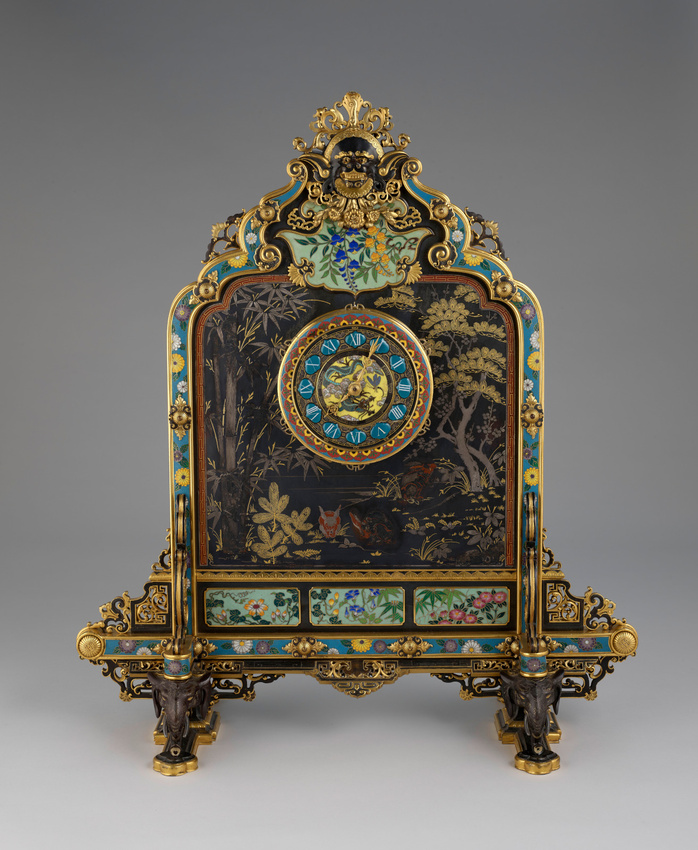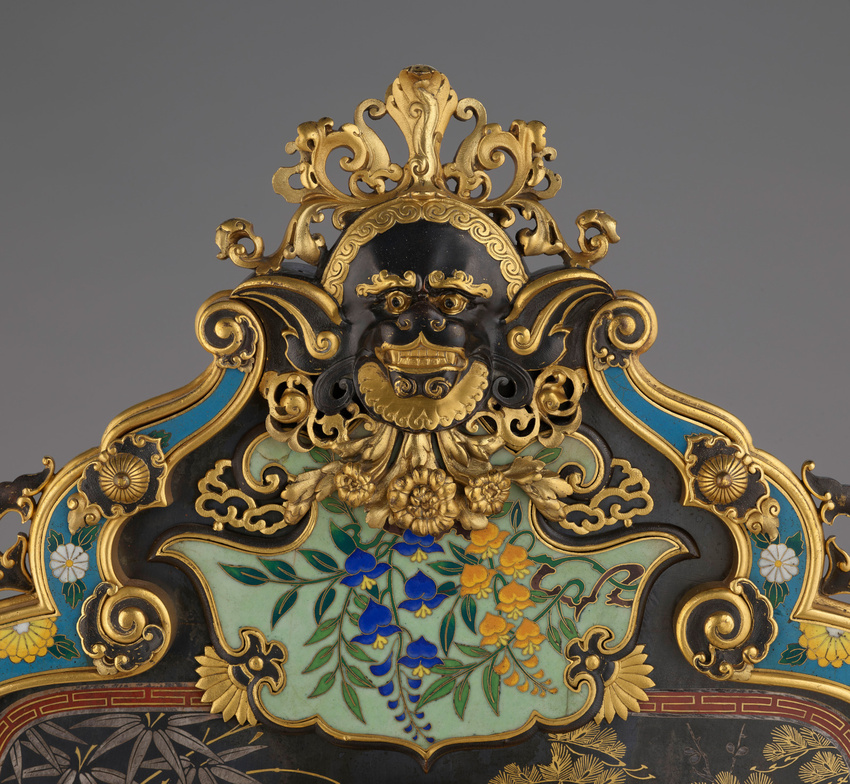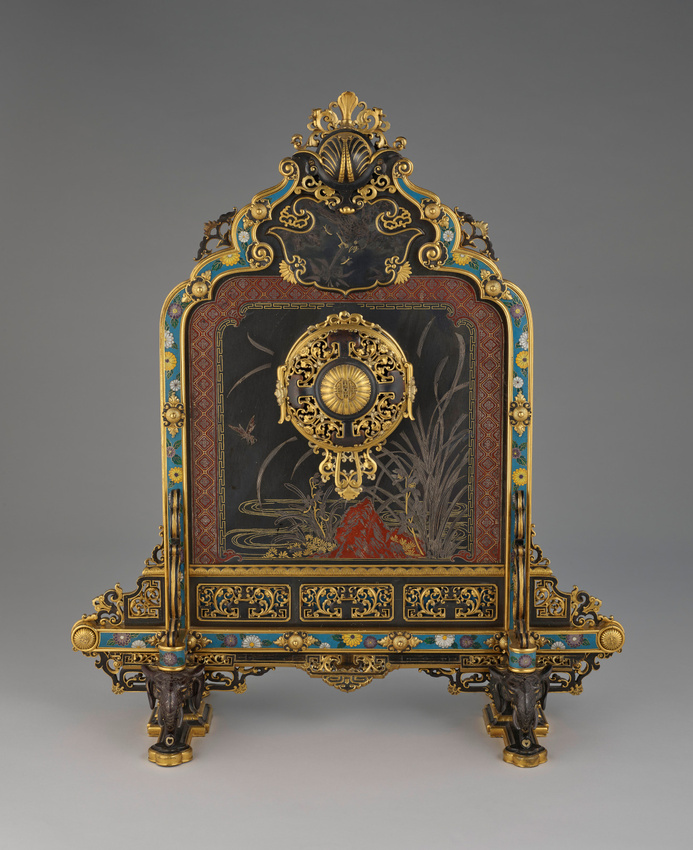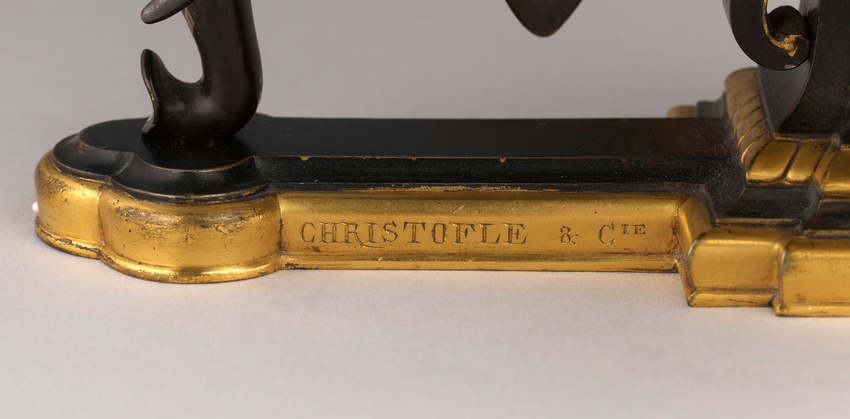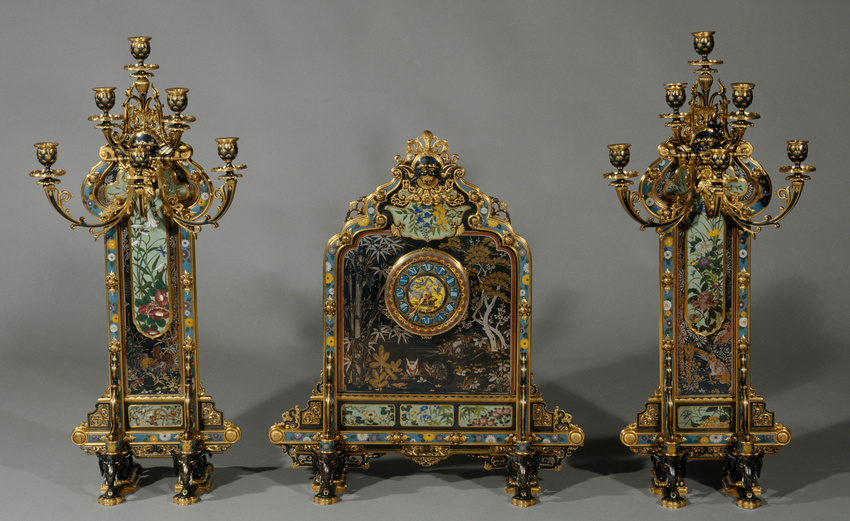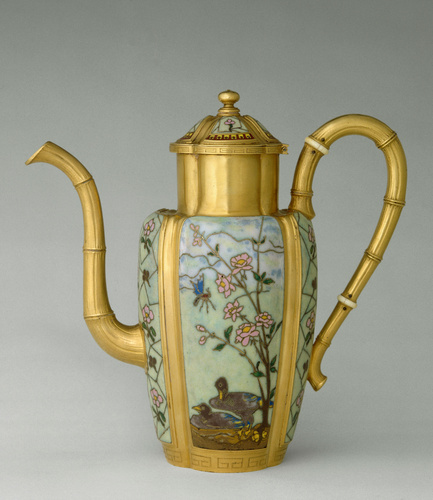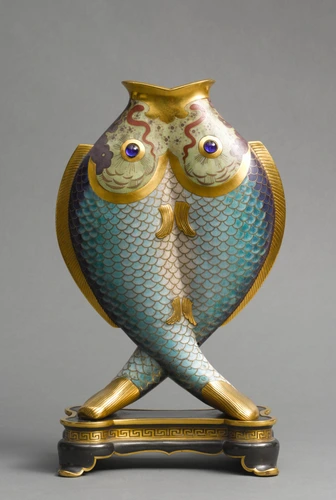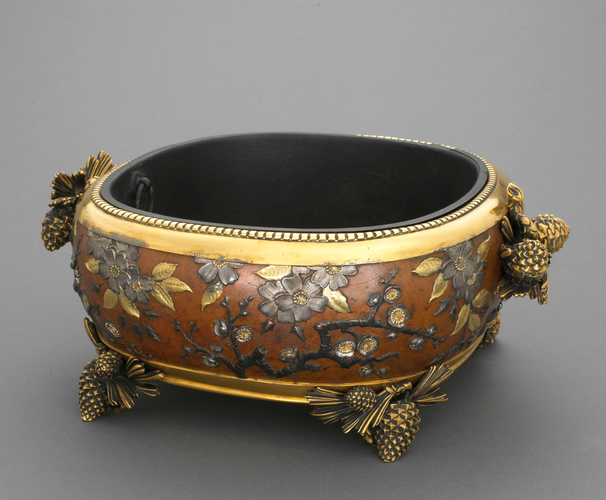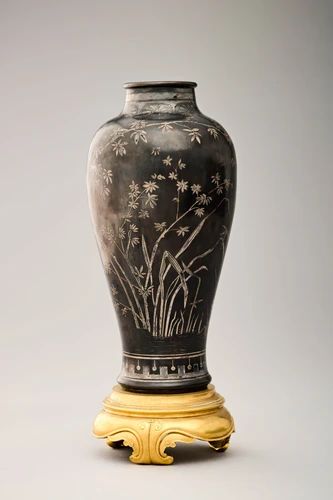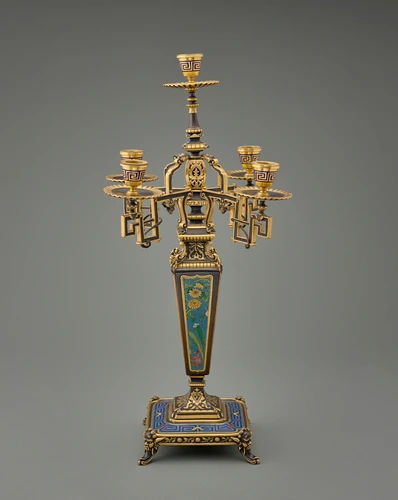Pendule
When the architect-decorator Emile Reiber joined the Maison Christofle in 1865, he had the idea of creating a collection of decorative objects. The skill of the craftsmen enabled Reiber to realise his wildest dreams, rivalling in boldness the casters, goldsmiths, and enamellers of China, Japan, India and Persia.
Thus, this imposing set is the most sumptuous version of a project for matching clock and candelabras, started in 1869 and elaborated over a long period of time. The mention of a "Japanese clock", noted by Reiber on one of his preparatory studies, is misleading. The shape, decoration and technique could have as easily been borrowed from China and India as from Japan. The clock is clearly adapted from a Chinese table screen; the composition of the candelabras is more surprising, possibly also derived from Chinese sources, specifically from certain engravings in the Summer Palace in Peking, and the elephant motif seems to be more of a reduction of monumental Indian sculptures. Only the upper panels on the reverse side of the candelabras – with their cartouches with mosaic bottoms, damascene and patinated backgrounds - are truly Japanese in spirit! Similarly, from a technical point of view, the perfect casting and embossing, the beautiful red and black patinas, the fine, silver and gold inlays and the cloisonné enamels are a very free transcription of oriental models.
Even today, people are astonished at such ornamental profusion and such virtuosity of execution. No other era has provided so much oriental erudition and fascination, the ultimate expression of this fashion for chinoiserie – and japonaiserie – which inspired western decorators to produce so many masterpieces full of vitality and fantasy.
